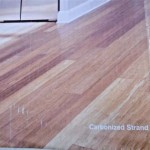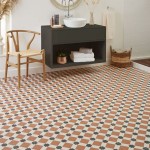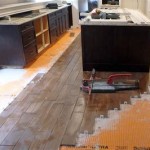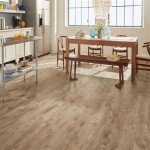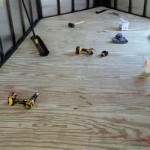Bat Flooring Options: Materials, Considerations, and Best Practices
Choosing the right flooring is a crucial decision for any home or building owner. The ideal flooring option balances aesthetic appeal, durability, functionality, and cost-effectiveness. However, when dealing with bat infestations, flooring considerations extend beyond standard material properties. Bats can damage flooring through guano accumulation, staining, scratching, and potentially carrying diseases. Therefore, bat-resistant or bat-friendly flooring options become a significant factor in maintaining a healthy and hygienic living environment, particularly in areas prone to bat activity, such as attics, porches, or sheds.
Selecting appropriate flooring where bats are present involves understanding how different materials react to bat-related issues and choosing materials that facilitate easy cleaning and minimize the risk of harboring pathogens. It also involves implementing preventative measures alongside flooring choices to deter bat activity and minimize potential damage. This article explores various flooring options suitable for areas susceptible to bat presence, focusing on material properties, maintenance considerations, and best practices for installation and upkeep.
Material Properties and Bat-Related Considerations
The material composition of flooring plays a crucial role in its suitability for areas where bats are present. Certain materials are more resistant to staining, scratching, and moisture damage, making them preferable choices. Furthermore, some materials offer better sanitation properties, simplifying cleaning and reducing the risk of pathogen transmission.
Concrete: Concrete is a highly durable and relatively affordable flooring option. It is resistant to scratches and can withstand significant weight. When properly sealed, concrete can also resist moisture penetration, preventing the growth of mold and mildew, which can be exacerbated by bat guano. However, concrete is porous and can be stained by bat guano if not sealed effectively. Proper sealing with a high-quality epoxy or polyurethane sealant is essential. Furthermore, concrete can be cold and hard underfoot, which may be a drawback for some users, and may need the addition of rugs or radiant heating.
Epoxy Flooring: Epoxy flooring is a resinous material applied over a concrete subfloor. It creates a seamless, non-porous surface that is highly resistant to stains, chemicals, and moisture. Epoxy is an excellent choice for areas where bats are present because it is easy to clean and does not harbor bacteria or mold. It provides a durable and hygienic surface that can withstand frequent cleaning and disinfection. However, epoxy flooring can be more expensive than concrete, and the installation process requires specialized skills.
Vinyl Flooring (Sheet and Tile): Vinyl flooring, available in both sheet and tile formats, offers a cost-effective and durable option. It is water-resistant and relatively easy to clean, making it a suitable choice for bat-prone areas. Sheet vinyl, in particular, offers a seamless surface, minimizing the risk of moisture penetration and harboring debris. Vinyl tiles are easier to replace individually if damaged but may have seams where moisture and debris can accumulate. When selecting vinyl flooring, it is important to choose a high-quality product with a durable wear layer to resist scratches and dents from bat claws or falling debris.
Tile Flooring (Ceramic and Porcelain): Ceramic and porcelain tiles are extremely durable and water-resistant. They are easy to clean and do not readily stain. Tile is a good option for areas where frequent cleaning and disinfection are necessary. However, the grout lines between tiles can be porous and may require regular sealing to prevent staining and the growth of mold and mildew. Porcelain tile is generally more durable and less porous than ceramic tile, making it a superior choice for high-traffic areas or areas with significant moisture exposure.
Rubber Flooring: Rubber flooring is a resilient and slip-resistant option. It is often used in gyms and other recreational areas due to its shock-absorbing properties. Rubber flooring is water-resistant and relatively easy to clean. It can be a suitable choice for areas where bats are present, but it is important to choose a high-quality product that is resistant to staining and bacterial growth. Some rubber flooring may have a strong odor, which could be a concern for sensitive individuals. Proper ventilation is important during and after installation.
Wood Flooring (Solid and Engineered): Solid wood flooring is generally not recommended for areas prone to bat infestations. Wood is porous and susceptible to moisture damage, staining, and mold growth. Bat guano can penetrate the wood fibers, causing permanent stains and odors. Engineered wood flooring, which consists of a thin layer of hardwood veneer over a plywood or fiberboard core, may offer slightly better moisture resistance than solid wood flooring. However, it is still not an ideal choice for areas with significant bat activity. If wood flooring is desired, it is essential to choose a water-resistant sealant and maintain a strict cleaning schedule.
Maintenance and Cleaning Considerations
Regardless of the flooring material chosen, regular cleaning and maintenance are essential for minimizing the impact of bat activity. Proper sanitation practices can help prevent the spread of diseases and maintain a healthy living environment. The frequency and intensity of cleaning will depend on the level of bat activity and the specific flooring material.
Regular Cleaning: Routine cleaning should include sweeping or vacuuming to remove bat guano and other debris. Wet mopping with a mild detergent solution is also recommended. Avoid using harsh chemicals or abrasive cleaners, as they can damage the flooring surface. It's advisable to use a HEPA filter vacuum cleaner to prevent the distribution of allergens and potential pathogens into the air.
Disinfection: In areas with significant bat activity, disinfection is crucial to eliminate potential pathogens. A diluted bleach solution (1 part bleach to 10 parts water) can be used to disinfect flooring surfaces. However, it is important to test the solution on an inconspicuous area first to ensure that it does not damage the flooring material. Always wear protective gloves and eye protection when handling bleach solutions. Other disinfectants effective against common bat-borne diseases should be considered and used according to the manufacturer's instructions.
Guano Removal: Bat guano can be difficult to remove, especially if it has been allowed to accumulate. It is important to remove guano carefully to avoid spreading dust and potential pathogens. Wear a respirator or dust mask, gloves, and eye protection when handling guano. Soak the guano with a disinfectant solution before attempting to remove it. Use a scraper or stiff brush to remove dried guano. Dispose of the guano properly in a sealed bag.
Sealing and Protection: Sealing flooring surfaces can help prevent staining and moisture penetration. Concrete, tile grout, and even some types of vinyl flooring can benefit from sealing. Choose a high-quality sealant that is appropriate for the specific flooring material. Consider using protective mats or rugs in high-traffic areas to minimize wear and tear. These can be easily cleaned or replaced as needed.
Addressing Stains and Odors: Bat guano can cause stubborn stains and odors. In some cases, professional cleaning may be necessary to remove stains completely. Odor-eliminating products can help neutralize lingering odors. Ensure adequate ventilation to help dissipate odors. Consider using enzyme-based cleaners, which are designed to break down organic matter and eliminate odors at their source. Always follow the manufacturer's instructions carefully.
Preventative Measures and Long-Term Solutions
Choosing the right flooring is only one aspect of managing bat-related issues. Implementing preventative measures can help deter bat activity and minimize potential damage. Long-term solutions may involve bat exclusion and habitat modification to create an environment that is less attractive to bats.
Bat Exclusion: Bat exclusion involves sealing entry points to prevent bats from entering a building. This is the most effective way to eliminate bat infestations. Identify all potential entry points, such as cracks, crevices, and gaps around windows and doors. Seal these entry points using caulk, sealant, or wire mesh. Install one-way exclusion devices, such as bat cones or nets, over entry points to allow bats to exit but prevent them from re-entering. Bat exclusion should be performed by a qualified professional to ensure that it is done safely and effectively.
Habitat Modification: Modify the environment to make it less attractive to bats. Trim trees and shrubs that provide roosting sites near buildings. Install bright lights in areas where bats are unwanted. Eliminate sources of standing water, which can attract bats and other pests. Consider installing bat houses in a suitable location away from the building to provide an alternative roosting site. This can help encourage bats to relocate away from the building.
Ventilation and Moisture Control: Proper ventilation is crucial for preventing moisture buildup and mold growth. Ensure that attics and other enclosed spaces are well-ventilated. Repair any leaks or water damage to prevent moisture from accumulating. Consider using a dehumidifier to control humidity levels. Proper ventilation and moisture control can help create an environment that is less conducive to bat activity and mold growth.
Regular Inspections: Conduct regular inspections of the property to identify any signs of bat activity. Look for bat guano, staining, or other indications of bat presence. Inspect attics, porches, and other potential roosting sites. Early detection of bat activity can help prevent infestations from becoming severe. Address any signs of bat activity promptly to minimize potential damage and health risks.
Professional Assistance: In some cases, professional assistance may be necessary to address bat infestations. A qualified wildlife control professional can perform bat exclusion, clean up bat guano, and implement preventative measures. They can also provide advice on choosing appropriate flooring and maintenance practices. Consider seeking professional assistance if you are unable to manage the bat infestation on your own or if you are concerned about health risks.
By considering material properties, implementing appropriate maintenance practices, and taking preventative measures, homeowners and building managers can mitigate the impact of bat activity and create a healthier and more hygienic living environment. Selecting appropriate flooring along with a comprehensive bat management strategy is essential for long-term success.

Ash Wide Plank Flooring Hardwood Vermont

Choosing The Best Wood Flooring For Your Home Living Room Floor Options Modern Floors

The 10 Best Hardwood Species For Wide Plank Flooring Vermont

Best Types Of Hardwood Flooring Floor Guide

The 10 Best Hardwood Species For Wide Plank Flooring Vermont

Basement Flooring Systems In Natick Shrewsbury Southborough Finished Subflooring

Pt Jati Luhur Agung Main Types Of Wood You Should Consider

Reclaimed Wood Flooring Wide Plank Elmwood Timber

Toxin Free Luxury Vinyl Plank Flooring Healthy House On The Block

Paper Bag Flooring Part Iii Sealer Options Wildfire Interiors
Related Posts


